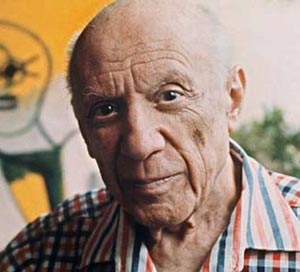FEATURE: Picasso and the Old Masters under the spotlight in London
 London - Picasso, or Goya, or a bit of both? - that is the central question at the heart of a new exhibition in London aiming to shed a light on the influence of Old Masters on the genius of Pablo Picasso.
London - Picasso, or Goya, or a bit of both? - that is the central question at the heart of a new exhibition in London aiming to shed a light on the influence of Old Masters on the genius of Pablo Picasso.
A self-portrait showing 16-year-old Picasso as an 18th century dandy in a powered wig was no doubt inspired by his celebrated predecessor who lived some 150 years earlier, curators at London's National Gallery said.
In a departure from its traditional focus on Old Masters, the National Gallery in Trafalgar Square has devoted an entire exhibition to the theme of how deeply Picasso, who lived from 1881 to 1973, was influenced by Old Masters, especially those from his native Spain.
Unlike an earlier - and highly controversial - exhibition on the same theme in Paris, the London show, entitled Picasso: Challenging the Past, does not hang the modernist and the Old Masters side by side.
Curators, keen to avoid a "spot the difference" effect, have instead opted for a chronological arrangement of the familiar Picasso themes of self-portraits, models and muses, still life and variations.
The effect is convincing: the most striking examples of Picasso combining Renaissance and classical influences with "Cubist distortions" come in his portrayal of statuesque women, including the painting Large Nude of Jacqueline Roque, whom Picasso married when he was 61.
"In both celebrating and parodying Goya's painting, Picasso expresses his ambivalent relationship with the art of the past," said curator Christopher Riopelle, comparing the 1964 Large Nude to Goya's Naked Maja.
"Picasso had a deep understanding of the long tradition of painting before him," said Riopelle, which primarily related to Spanish masters, but also included Rembrandt, Rubens, Frans Hals and, in the 19th century, Delacroix, Ingres, Manet, Toulouse-Lautrec, Degas, Van Gogh, Cézanne and Matisse.
"Picasso repeatedly pitted himself against these masters, taking up their signature themes and techniques in his own innovative painting," said Riopelle. "Picasso most forcefully reinvigorated the European tradition in the 20th century."
A key example in the exhibition is Picasso's 1957 take on Las Meninas, the 1656 Velazquez masterpiece that prompted Picasso to produce more than fifty canvas variations.
"I would try to do it in my own way, forgetting about Velazquez ... They would be MY meninas," Picasso once said.
Brightly-coloured, savage and humorous Picasso variations on Delacroix's Women of Algiers and Manet's Luncheon on the Grass painted in the 1950s and 1960s, are further highlights of the exhibition.
"In these late works Picasso affirmed his roots in the classical tradition in which imitation is considered essential to creativity," said the catalogue.
The visitor, meanwhile, is left to ponder afresh the yardsticks against which to measure one of the most revolutionary and versatile artist of modern times.
By showing modern art for the first time the National Gallery has added a new element to the fiercely-competitive London museum world.
When Tate Modern opened in 1990, an agreement was struck between the two London major art institutions which said that the modern era, beginning in 1900, would be housed in the Tate, and the Old Masters would be shown in the National Gallery.
"Tate Modern is the national gallery of Modern art. But Modern art in the future may be differently defined," Nicholas Penny, the National Gallery's new director, commented ambiguously. (dpa)